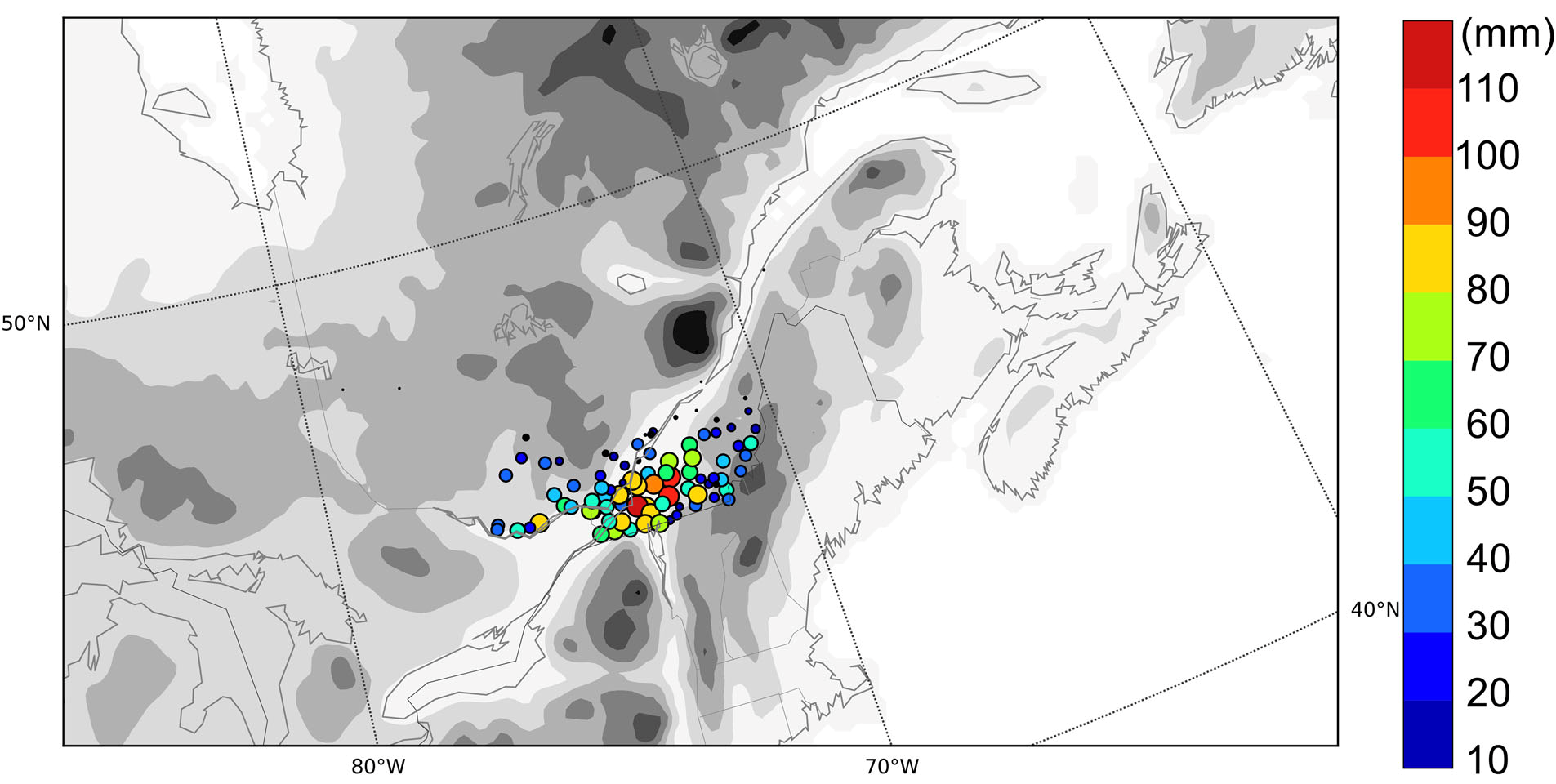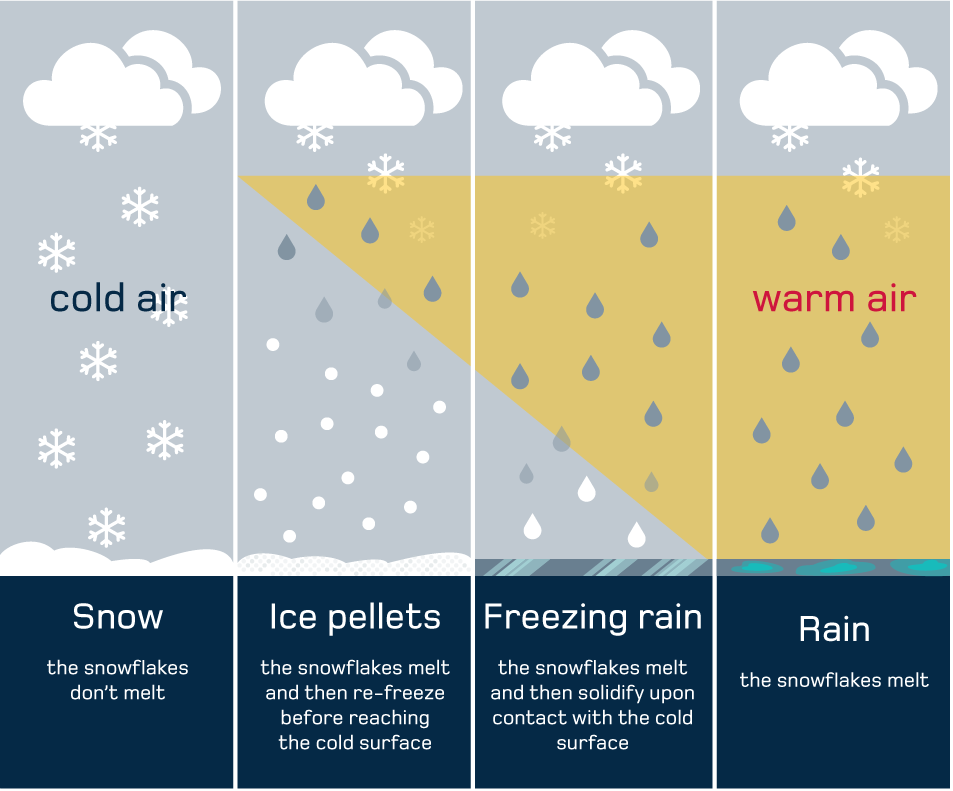Freezing rain
Freezing rain is a well-known phenomenon in Quebec. In fact, Quebec ranks among the places most affected by events of this type in North America, particularly in the south of the province and in the valleys of the St. Lawrence, Ottawa, Richelieu and Saguenay rivers.
Freezing rain events can have a negative impact on infrastructure, ecosystems, economic activities and even public health.
Definition | Freezing rain and glaze ice
Freezing rain is a supercooled liquid precipitation with droplets that freeze on impact with the ground, objects on the surface and aircraft in flight.
Glaze ice is a generally homogeneous, transparent buildup of ice produced by the freezing of supercooled droplets on objects with a surface below 0°C or slightly above.
Significant freezing rain events in Quebec
In recent decades, Quebec has witnessed a number of major freezing rain events that have left their mark on the collective imagination. In January 1998, two consecutive episodes totalling five days caused what is commonly known as the “ice storm crisis.” Several parts of the province were hit hard, including the Outaouais, Montérégie, Montréal and Beauce regions. The “black triangle” between Saint-Hyacinthe, Granby and Saint-Jean-sur-Richelieu recorded ice accumulations in excess of 100 mm. Nearly 1.5 million people lost their electrical power, some for more than a month. This event also had a major impact on forests, affected the physical and mental health of several thousand people and caused the death of around thirty.
Learn more about the changes to freezing rain in Québec.
More recently, in April 2023, a 13-hour episode of freezing rain in Montréal caused power outages for thousands of homes, in addition to extensive tree damage. This event showed that even shorter, less intense episodes of freezing rain can cause disruption, such as by making roads and sidewalks slippery.

Figure 1: Cumulative amount of freezing rain observed between 0600 UTC January 4, 1998, and 0600 UTC January 10, 1998. From data analyzed by Milton and Bourque (1999). The intensity of the observations is represented by both the size of the dots and their colour. The topography from CRCM5 is shown in grey. From Bresson et al. 2017.
How freezing rain forms
In Quebec, precipitation in winter generally falls in the form of snow. For freezing rain to occur, two essential conditions must be met:
-
Near the surface, there must be a layer of cold air whose temperature is below freezing, i.e. less than 0°C; and
-
Above this layer of cold air, there must be a mass of warmer air, at a temperature above 0°C.
When these two conditions are met, snowflakes begin to form in the upper clouds. As they fall, the snowflakes reach the layer of warm air and melt, turning into raindrops. As they continue to fall, these drops enter the cold layer (<0°C) near the surface.
If that layer isn’t too thick, the drops remain in liquid form. This phenomenon is called “supercooling.” On contact with a cold surface, with a temperature of 0°C or below, they immediately freeze, forming glaze ice.

Figure 2: Atmospheric temperatures during the formation of various types of precipitation: snow, ice pellets, freezing rain and rain. Figure drawing from the National Weather Service.
If the layer of warm air above is not warm or thick enough to cause the snow to melt completely, the particles of water and mixed ice may freeze into balls of ice before hitting the ground. The result is ice pellets instead of freezing rain. Ice pellets also possible if the cold air layer is particularly cold. Figure 2 illustrates how different types of precipitation are formed.
Topography also plays an important role in the freezing rain formation process. The valleys of the St. Lawrence, Ottawa, Richelieu and Saguenay rivers are particularly prone to freezing rain. This is because these valleys channel cold air, making it easier to maintain a layer of cold air near the surface as a warm, humid low-pressure system arrives from the south.